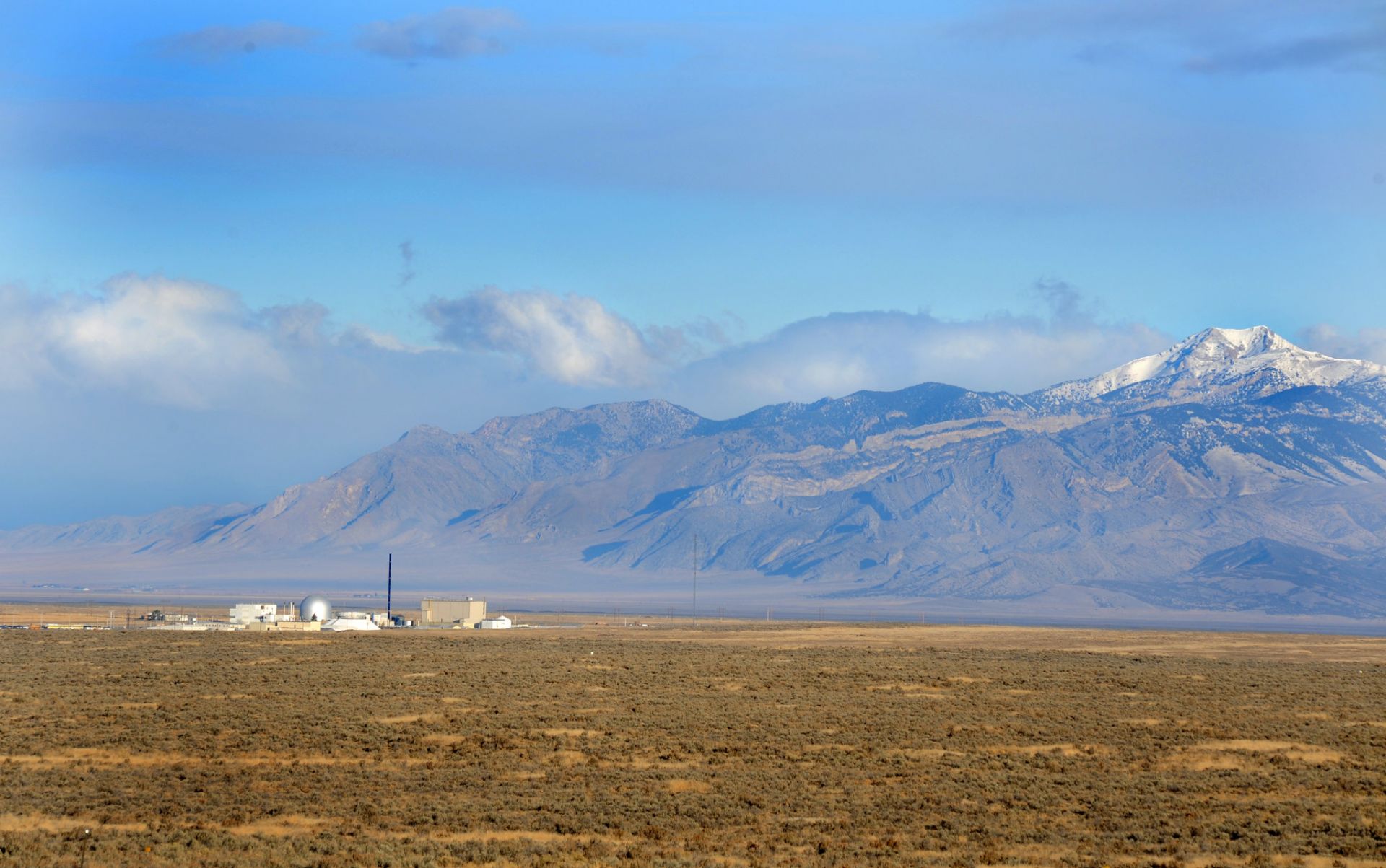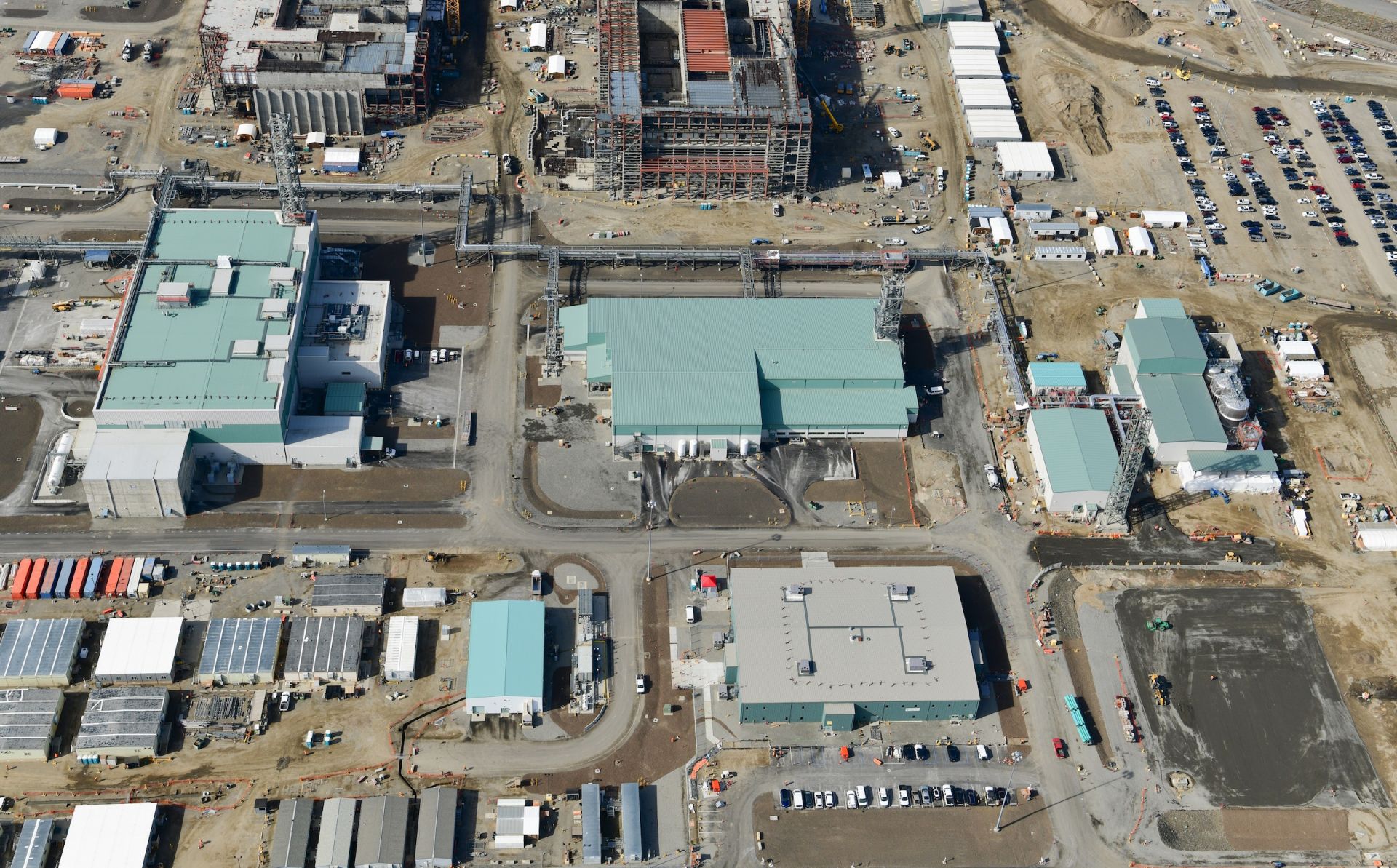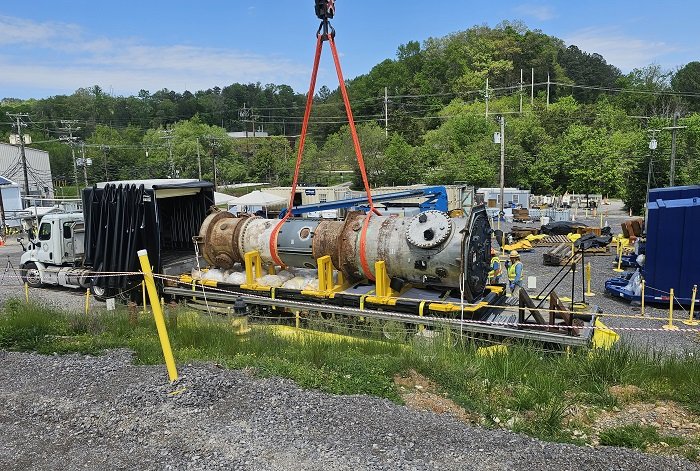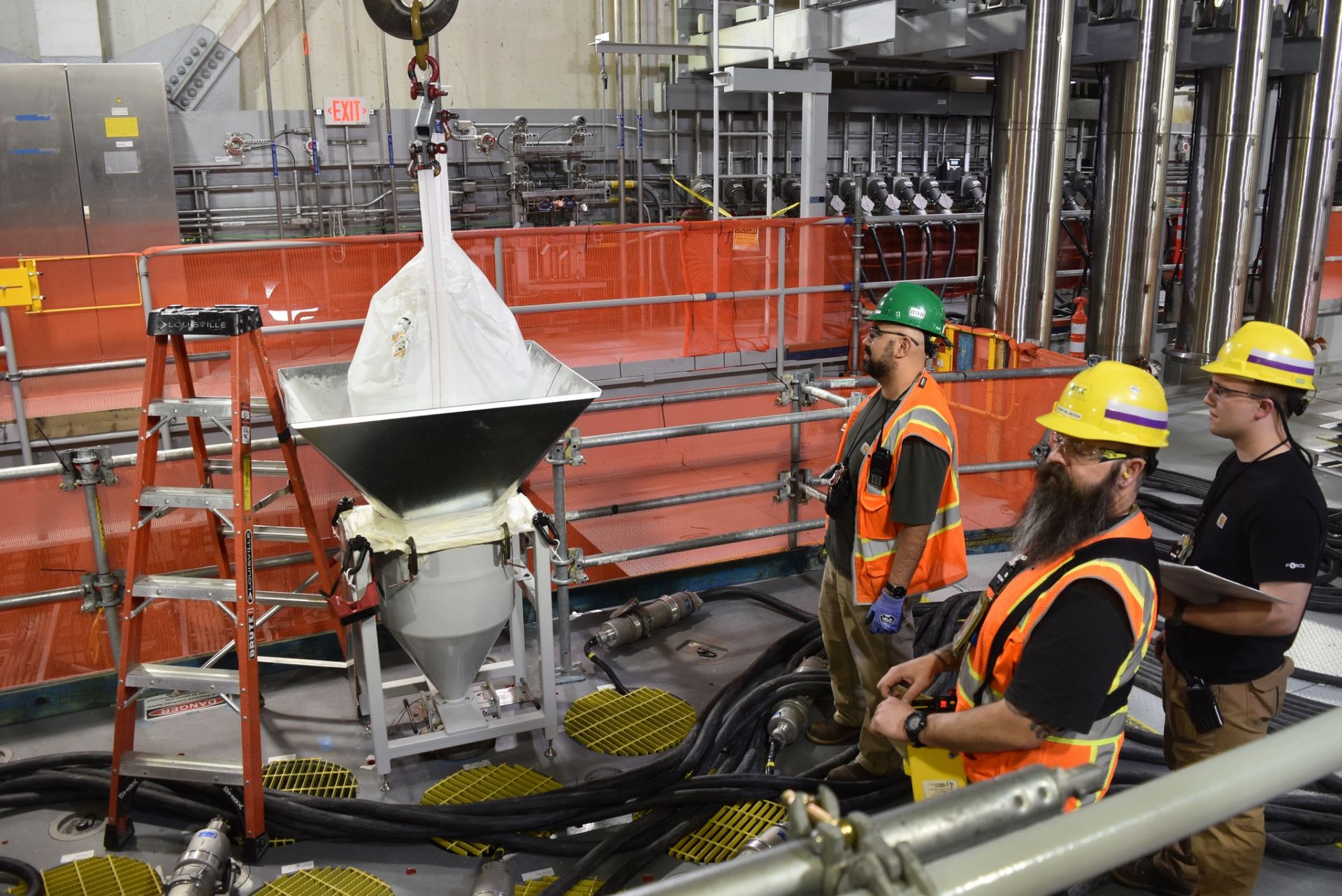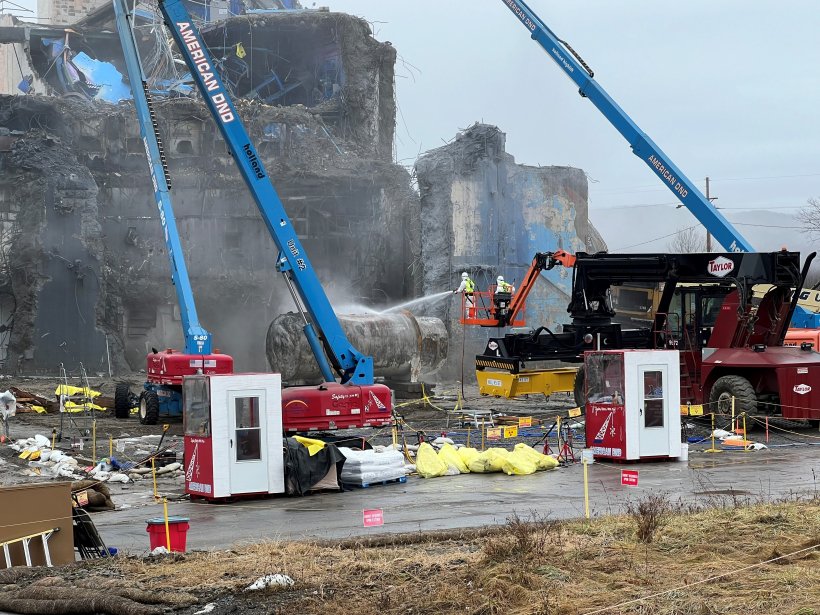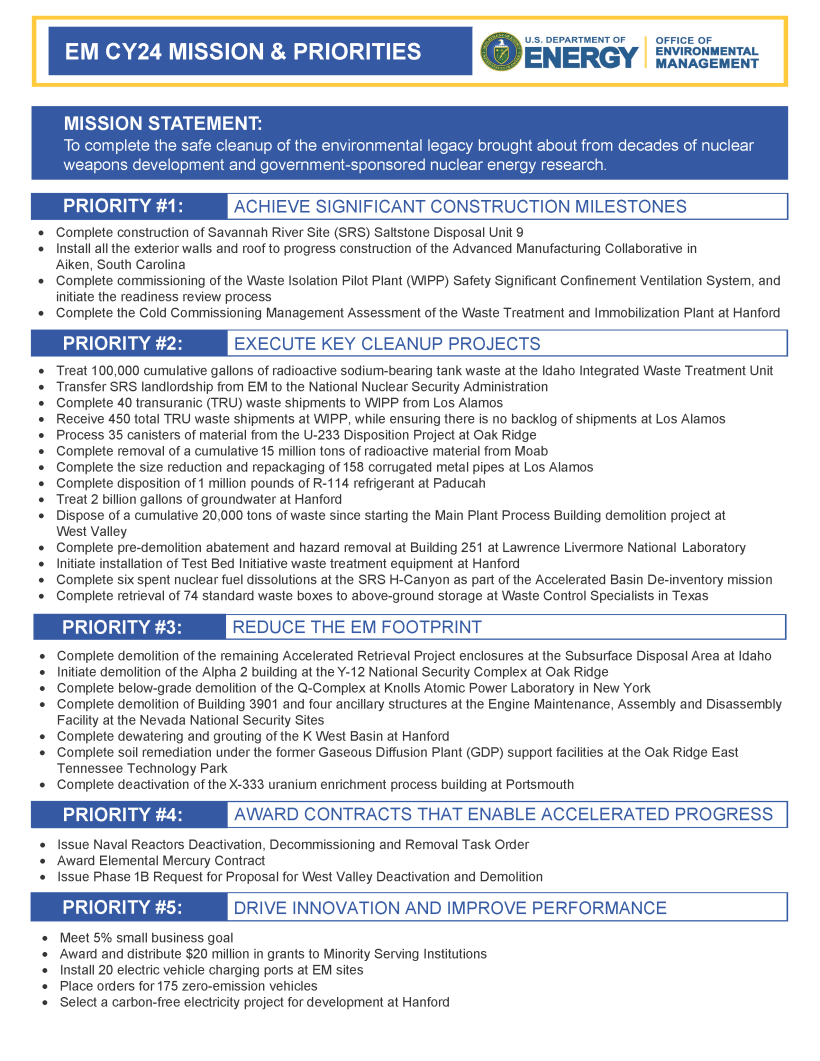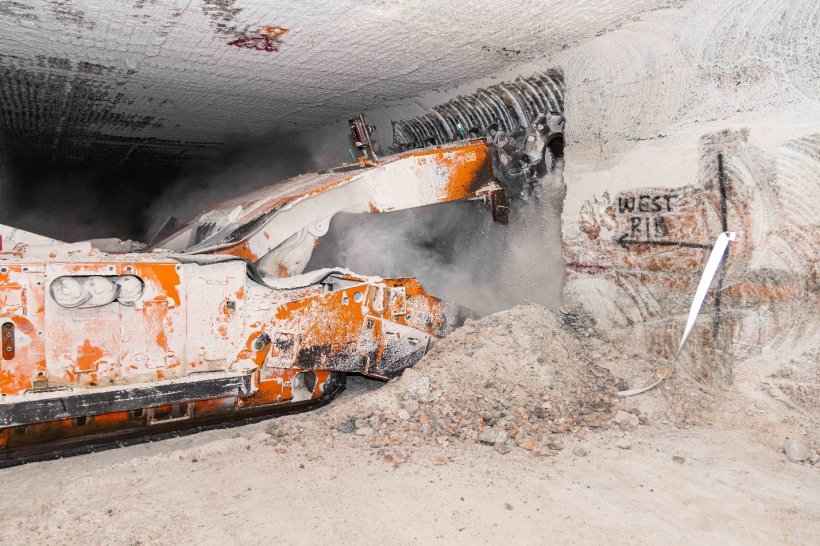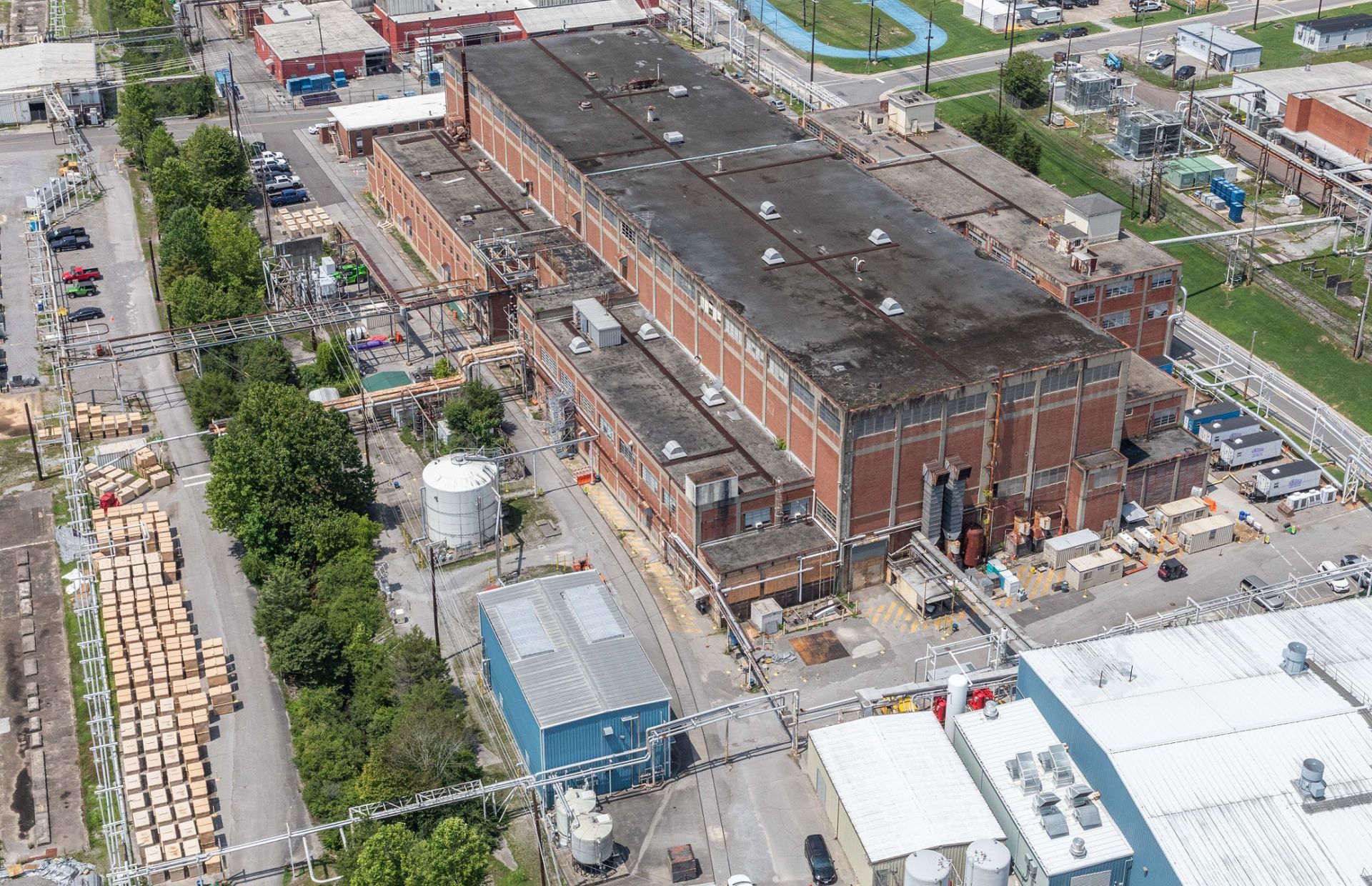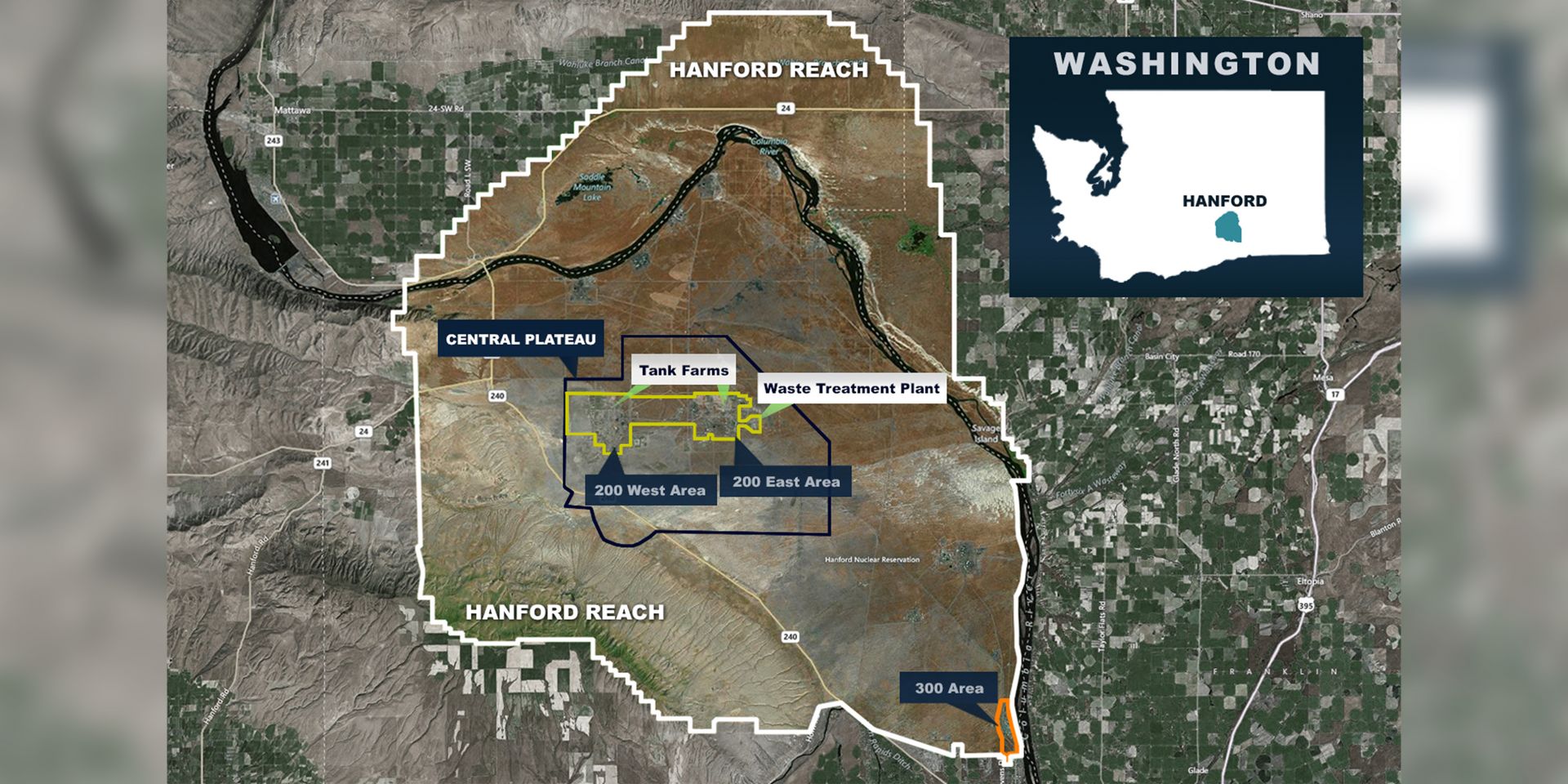Stephanie Doll of WRPS poses next to the metal patch applied during the demonstration. (Photo: DOE)
The Department of Energy’s Office of Environmental Management and its contractor Washington River Protection Solutions (WRPS) recently demonstrated the use of cold spray technology as a means of refurbishing double-shell waste tanks at the Hanford Site in Washington state. The tanks store liquid radioactive and chemical waste that was created during Hanford’s plutonium production era.
The Materials and Fuels Complex at INL. (Photo: INL)
The Department of Energy will enter into lease negotiations with two solar energy developers for 400 megawatts of solar electricity generation within the Idaho National Laboratory site. Announced on June 5, the projects are the first proposed projects selected under the department’s Cleanup to Clean Energy initiative, an effort to repurpose parts of DOE-owned lands—portions of which were previously used in the nation’s nuclear weapons program—into sites of clean-energy generation, including for solar, geothermal, wind, and nuclear.
Lourdes Legaspi, engineering automation supervisor (center) and her team are designing pipe and equipment components for the Hanford Site’s partially completed HLW Facility. A collaboration between the DOE and Bechtel National set a foundation for requirements engineers will follow in continuing the design of the facility. (Photo: DOE)
The Department of Energy’s Office of Environmental Management announced that its Office of River Protection (ORP) recently created a plan with contractor Bechtel National for completing the High-Level Waste Facility at the Hanford Site’s Waste Treatment and Immobilization Plant, also known as the Vit Plant.
Hanford’s Waste Treatment and Immobilization Plant, also known as the Vit Plant. (Photo: Bechtel National)
Researchers at the Department of Energy’s Argonne National Laboratory are investigating the details of plutonium chemistry with the goal of aiding the cleanup of the Hanford Site in Washington state. For more than 40 years, reactors located at Hanford produced plutonium for America’s defense program, resulting in millions of gallons of liquid radioactive and chemical waste.
UCOR employees use a crane to load the Low Intensity Test Reactor vessel for transport to its final disposition location in Clive, Utah. (Photo: DOE)
The Department of Energy’s Office of Environmental Management announced that the 30-foot-long, 37,600-pound reactor vessel from Oak Ridge National Laboratory’s Low Intensity Test Reactor was shipped to EnergySolutions’ low-level radioactive waste facility in Clive, Utah, in late April.
A view of the Waste Isolation Pilot Plant in New Mexico. (Photo: DOE)
Harrison Western Shaft Sinkers (HWSS), the company drilling a new utility shaft at the Department of Energy’s Waste Isolation Pilot Plant in New Mexico, has retained a safety culture expert following a near-miss accident in the shaft late last year. The safety expert will conduct monthly facilitated discussions with crews working on the shaft to reinforce expectations for identifying concerns regarding unsafe circumstances, according to a recent report by the Defense Nuclear Facilities Safety Board (DNFSB).
The Waste Isolation Pilot Plant, near Carlsbad, N.M. (Photo: DOE)
The Department of Energy’s Office of Environmental Management has issued a request for qualifications for interested parties and prospective offerors looking to enter into a realty agreement for carbon-pollution-free electricity (CFE) projects at the department’s Waste Isolation Pilot Plant site in southeastern New Mexico.
Vit Plant crews begin adding frit into Hanford’s second melter. (Photo: Bechtel National)
The Department of Energy’s Office of Environmental Management recently announced that crews at the Hanford Site’s Waste Treatment and Immobilization Plant, also known as the Vit Plant, recently brought the second of two 300-ton melters up to the operating temperature of 2,100°F.
A screen shot of a video marking the 25th anniversary of operations at the WIPP disposal facility. (Image: DOE)
The Department of Energy’s Office of Environmental Management celebrated a major milestone for the Waste Isolation Pilot Plant last week, marking the 25th anniversary of the receipt of the first waste shipment at the disposal facility in New Mexico’s Chihuahuan Desert.
Hanford’s Waste Treatment and Immobilization Plant, also known as the Vit Plant. (Photo: Bechtel National)
The Department of Energy’s Office of Environmental Management once again awarded a 10-year, $45 billion contract to Hanford Tank Waste Operations and Closure (H2C) of Lynchburg, Va., for the cleanup of tank waste at the Hanford Site.
One of 18 startup heaters is installed in Hanford’s second melter, which will be used to vitrify liquid waste. (Photo: DOE)
The Department of Energy’s Office of Environmental Management announced that crews at the Hanford Site’s Waste Treatment and Immobilization Plant, also known as the Vit Plant, recently installed 18 temporary startup heaters in the second of two melters in the plant’s Low-Activity Waste Facility.
Workers at the West Valley Demonstration Project prepare a large tank for loading after removing it from a liquid waste cell of the Main Plant Process Building. (Photo: DOE)
The Department of Energy’s Office of Environmental Management and its cleanup contractor at the West Valley Demonstration Project have removed the largest of nine tanks from a liquid waste cell as part of the ongoing demolition of the Main Plant Process Building, the office announced on February 6.
A waste transport delivery truck heads for the WIPP site in New Mexico. In 2023, the repository saw its best shipment performance in 10 years. (Photo: DOE)
The Department of Energy’s Office of Environmental Management announced last week that, for calendar year 2023, the department’s Waste Isolation Pilot Plant (WIPP) had its best shipment performance in 10 years, having received 489 transuranic (TRU) waste shipments from generator sites throughout the country. For comparison, WIPP received only 272 shipments in 2022.
Click to expand to see all priorities. (Image: DOE)
The Department of Energy’s Office of Environmental Management has released its program priorities for calendar year 2024, covering key cleanup actions, project construction, acquisition, and other important activities that will further the office’s mission of addressing the environmental legacy of the nation’s nuclear research and weapons development.
A continuous miner machine cuts into salt rock as mining begins on Panel 11, one of WIPP’s next waste disposal panels. (Photo: DOE)
For the first time in a decade, crews have started mining a new disposal panel at the Department of Energy’s Waste Isolation Pilot Plant (WIPP) in New Mexico, the nation’s deep geologic waste repository for defense-related transuranic waste.
Oak Ridge crews will begin demolition of the 325,000-sqaure-foot Alpha-2 facility this year, marking the first teardown of a former uranium enrichment facility at Y-12. (Photo: DOE)
The Department of Energy announced that its Oak Ridge Office of Environmental Management (OREM) is moving ahead with a slate of projects this year that will alter the Tennessee site’s skyline, remove inventories of nuclear waste, and complete a major phase of cleanup.
The DOE’s Hanford Site. (Image: Washington River Protection Solutions)
The Department of Energy’s Office of Environmental Management issued for public comment the first request for qualifications (RFQ) related to the department’s Cleanup to Clean Energy initiative, which aims to increase energy production by making DOE land available for the potential development of carbon-free energy (CFE) electricity generation through leases.



